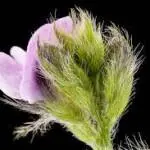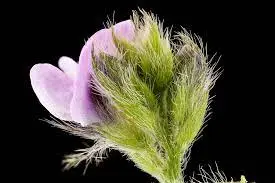No products in the cart.

Transform Your Space with Ornamental Crops | Complete Guide
Ornamental Crops: Beautifying Your Space Naturally
Ornamental crops are not just plants; they’re a touch of nature’s beauty right in your home or garden. Whether you’re a seasoned gardener or just starting out, these plants offer something for everyone. Let’s dive into the world of ornamental crops and explore how they can transform your surroundings into vibrant, lush spaces.

Table of Contents
| Sr# | Headings |
|---|---|
| 1 | What are Ornamental Crops? |
| 2 | Benefits of Ornamental Crops |
| 3 | Types of Ornamental Crops |
| 4 | How to Choose Ornamental Crops |
| 5 | Ornamental Crops in Landscaping |
| 6 | Caring for Ornamental Crops |
| 7 | Common Issues with Ornamental Crops |
| 8 | Sustainable Gardening with Ornamental Crops |
| 9 | DIY Projects with Ornamental Crops |
| 10 | Ornamental Crops and Mental Well-being |
| 11 | Frequently Asked Questions |
What are Ornamental Crops?
Ornamental crops are plants grown for decorative purposes due to their attractive appearance. Unlike crops grown for food or other purposes, ornamental crops are primarily valued for their beauty. These plants can include flowers, foliage, and even certain types of grasses and shrubs.
Benefits of Ornamental Crops
Decorating with ornamental crops brings a myriad of benefits beyond just aesthetics. They:
- Enhance the Visual Appeal: Ornamental crops add color, texture, and life to any space.
- Improve Air Quality: Many ornamental plants help purify the air by removing toxins.
- Boost Mood and Reduce Stress: Being around greenery has been shown to improve mental well-being.
- Encourage Wildlife: Some ornamental plants attract birds, butterflies, and other beneficial insects.
- Increase Property Value: A well-landscaped property with ornamental plants can increase its resale value.
Types of Ornamental Crops
There are countless types of ornamental crops to choose from, including:
- Flowering Plants: Roses, tulips, orchids, and daisies.
- Foliage Plants: Ferns, ivy, coleus, and caladiums.
- Succulents and Cacti: Aloe vera, jade plants, and prickly pear cactus.
- Ornamental Trees and Shrubs: Japanese maple, flowering dogwood, and azaleas.
How to Choose Ornamental Crops
Choosing the right ornamental plants depends on several factors:
- Climate: Select plants that thrive in your specific climate zone.
- Space: Consider the size of your garden or the area where you plan to place the plants.
- Maintenance: Determine how much time and effort you can dedicate to caring for the plants.
- Aesthetic Preferences: Pick plants that match your preferred color scheme and overall garden style.
Ornamental -Crops in Landscaping
Integrating ornamental -crops into your landscape design can create stunning results. Consider:
- Color Schemes: Using plants with complementary colors to create a harmonious look.
- Texture and Form: Mixing plants with different leaf shapes and sizes for visual interest.
- Layering: Creating depth by placing taller plants in the back and shorter ones in the front.
Caring for Ornamental -Crops
Caring for ornamental -crops involves:
- Watering: Provide adequate water based on the plant’s needs.
- Fertilizing: Use a balanced fertilizer to promote healthy growth.
- Pruning: Regularly trim dead or overgrown parts of the plant.
- Pest Control: Monitor for pests and treat as necessary with environmentally-friendly methods.
Common Issues with Ornamental -Crops
Ornamental -crops can face challenges such as:
- Pests: Aphids, mites, and caterpillars can damage plants.
- Diseases: Fungal infections and rot may occur, especially in humid conditions.
- Environmental Stress: Extreme temperatures or drought can harm plants.
Sustainable Gardening with Ornamental -Crops
To practice sustainable gardening:
- Choose Native Plants: They are adapted to your local climate and require less water and maintenance.
- Use Organic Mulch: Mulch conserves water, suppresses weeds, and improves soil health.
- Collect Rainwater: Reduce water usage by collecting rainwater for your plants.
DIY Projects with Ornamental -Crops
Get creative with these DIY ideas:
- Vertical Gardens: Plant a vertical wall of succulents or herbs.
- Terrariums: Create miniature landscapes inside glass containers.
- Hanging Baskets: Use colorful flowers or trailing plants for eye-catching displays.
Ornamental -Crops and Mental Well-being
Ornamental -crops can significantly impact mental health by:
- Reducing Stress: Gardening has therapeutic effects and promotes relaxation.
- Increasing Happiness: Seeing plants grow and bloom can boost mood and create a sense of accomplishment.
Frequently Asked Questions
Are ornamental -crops only for outdoor gardens?
Yes, ornamental -crops are primarily used outdoors, but many can thrive indoors as well.
How do I know which ornamental- crops are suitable for my climate?
Research the USDA Hardiness Zone for your area to determine which plants will thrive.
Can ornamental plants attract pests?
Yes, but maintaining healthy plants and using pest-resistant varieties can help prevent infestations.
What should I do if my ornamental plant gets a disease?
Remove affected parts promptly and treat with an appropriate fungicide if necessary.
How often should I water my ornamental plants?
Watering needs vary by plant type and climate, so check soil moisture regularly.
In conclusion, ornamental -crops offer a wonderful way to enhance your surroundings with beauty, health benefits, and a touch of nature. Whether you’re planting a garden or simply adding a few potted plants to your balcony, these vibrant additions can make a significant impact. Start exploring the world of ornamental- crops today and watch your space transform!
Remember, gardening is not just a hobby; it’s a way to connect with nature and create a healthier, happier environment for yourself and those around you.
Go and turn on towards organic farming to save future and thire save childs:
Elevate Plant Growth with Premium Bone Powder – Buy Now!
Organic Cow Dung Compost: Transform Your Garden Naturally
Premium Humic Acid for Healthy Plants | Enhance Soil & Boost Growth
Boost Plant Growth Naturally with Mustard Cake | Organic Fertilizer
Transform Your Garden with NPK Fertilizer | Boost Growth by 30%
Premium Perlite for Enhanced Gardening | Buy Now
Live Earthworms with Enhance Your Garden (soil health)
1 Neem Khali: Unveiling the Wonders of Nature
1Transform your garden with vermiwash-buy now
1 Premium quality Vermicompost [ केचुआ खाद ]
Follow us:
Tagged Inornamental crop


